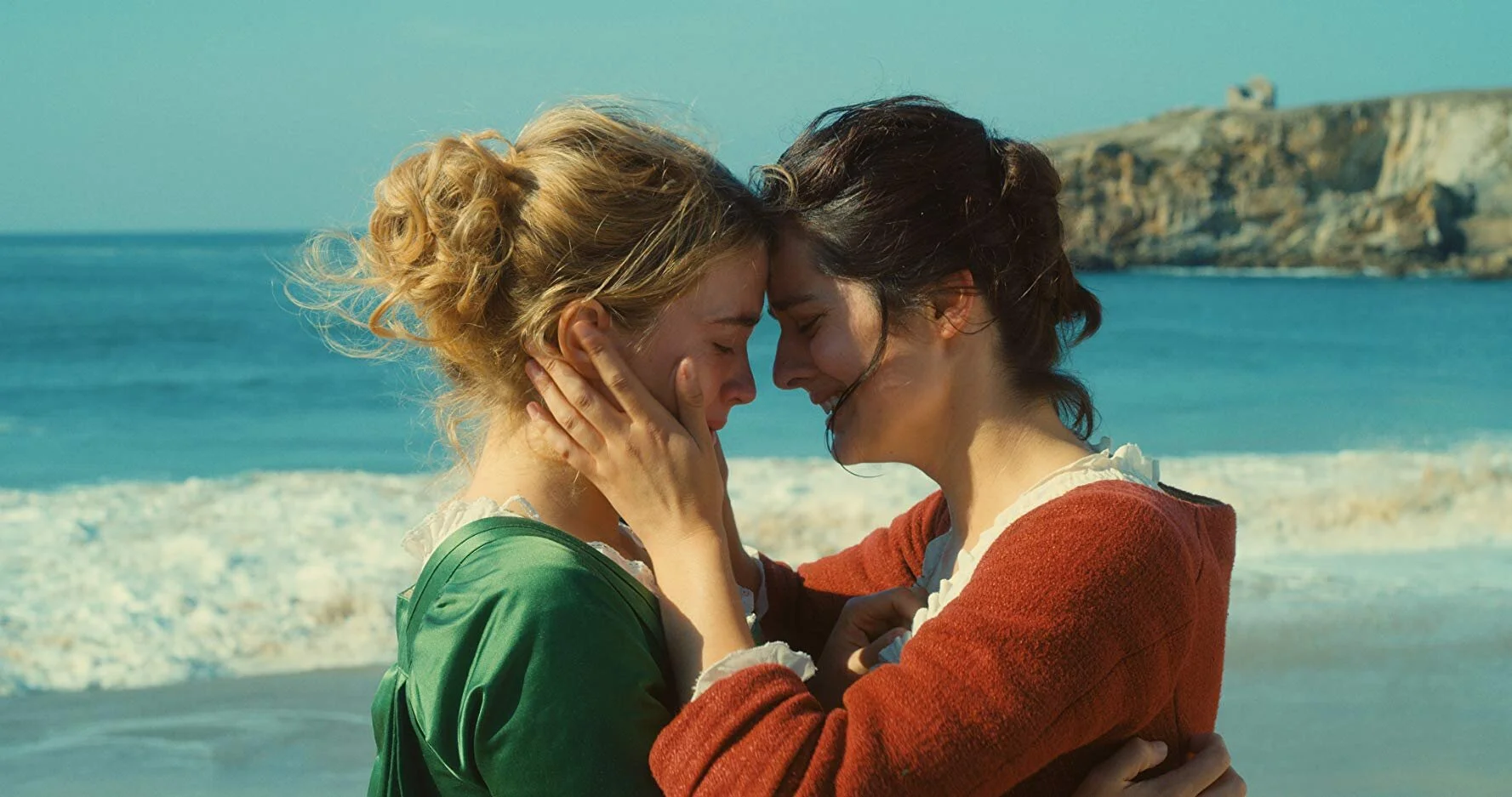'Portrait of A Lady On Fire' is the work of an auteur
Art is never truly finished; it is abandoned. That abandonment stretches beyond the canvas the artist paints but into her own life. Filmmaker Céline Sciamma presents a contemporary reflection on the hierarchy of sexuality in the late eighteenth century that spans its thematic resonance today. At last, a filmmaker constructs a deliberately slow-paced film for reasons that are inherently clear to its audience. "Portrait of A Lady On Fire" is a meditation of art that deviates from contrived pretention into something more universal yet also taboo.
Héloïse (Adèle Haenel) is a bride to be a for a Milanese Nobleman. Per her mother's request, Marianne (Noémie Merlant) is assigned to stay at her estate on an isolated island in Brittany to paint a portrait of her daughter. Afraid to pose herself, it's up to Marianne to pick up on Héloïse's gestures to create the vignette. During Mariann's process, the two women begin to develop feelings for one another beyond a pure friendship. The evolution of their relationship feels genuine. There's not a false moment of enlightenment but rather a slow-burning rhythmic movement towards the women being drawn towards each other giving me one of the most realistic love stories I have ever seen. Sciamma's studious measure allows us to sync in the story, letting us not only understand each character's motivations but feel them develop. We feel the contempt that our two protagonists have towards a hierarchy society. We feel how their hatred extends into emotional freedom when they finally embrace one another, which doesn't happen until far into the movie's running time.
Trapped within the strict societal standards bestowed upon her, Héloïse can't be herself. At first, we think there's something wrong with her mentally. She never resembles joy; Héloïse is consistently demeaning in her interactions with others and seems to want to jump out of her skin. The emotions she presents towards Marianne is contemptuous. She wonders why she's shadowing her. The information regarding the portrait is intentionally withdrawn from Héloïse due to her mother's fear of her response. When Marianne reveals her true intentions to Héloïse, the relation between the two transcends into an unspoken love. Céline Sciamma doesn't bog the audience down with lofty monologues on the character's feelings. Everything is communicated through looks, pacing, and blocking.
Film is meant to show not tell. The communication of a portrait is quite literally put to the screen via Claire Mathon's breathtaking cinematography. Echoing the imagery of Stanley Kubrick's "Barry Lyndon," Mathon films a contemporary digitized inspiration of the late Kubrick's work. The reason why everything looks like a painting other than the film's title is the fact that they were structured on Hélène Delmaire's portraits. Spending 16 hours every day painting, Sciamma would use Delmaire's work as a blueprint for where the character's eye lines and blocking would be. The result is a stunning image that feels like a moving canvass. Shot on an extremely digitized RED Weapon at an 8K resolution, the cinematography presents something incredibly contemporary, allowing us to reflect on how Héloïse's love is forbidden even by today's standards.
It is asked early in the film from Marianne why Héloïse never smiles. Later Héloïse questions Marianne on why she doesn't draw portraits of naked men. She already depicts nude women, so why would anyone be bothered by her drawing the opposite sex? Although we live in a society where a woman supposedly has the same rights as men, they are still restricted by the same standards set hundreds of years ago. Although a woman can marry the same sex now, it is considered unusual. Fashionable society considers the ideal image of a woman to be a smiling hairless barbie doll. Héloïse contradicts that by showing how she genuinely feels. At one point in the film, Héloïse lays in bed shirtless with her arm raised stroking her armpit hair, challenging the audience to consider if her hair is alluring or revolting. Societal standards do not change, yet neither does the power of love and the human spirit.
Unconventional in almost every way, "Portrait of A Lady On Fire" is the vision of an auteur. Not a single element of the film is wasted. The dialogue is sharp and to the point, communicating exactly what it needs to. Every frame is a painting without any formulaic coverage, and the score is stunning. Abandoning the convention of a non-diegetic orchestral score, Sciamma displays music through the ears of Héloïse. Living an enclosed life, Héloïse has never heard music on anything but a harpsichord. At a particular moment in the film, our two main characters are at some tribal gathering. The women in the tribe continually chant 'non possunt fugere' which in Latin translates to 'they cannot escape.' "Portrait of A Lady on Fire" is an inescapable masterwork with an ending that will leave you emotionally floored. When Marianne finishes her portrait of Héloïse, it is unsatisfactory to her, as are many of her renditions of the woman she loves. For the artist, the work is never done. For filmmakers, there's always a sound effect, a cut, a shot, anything that can be adjusted. By the end of the procedure, a deadline is set by the distributor; thus, the work is abandoned. Only a certain level of satisfaction can be achieved. The accomplishment of "Portrait of A Lady On Fire" is vast, but I'm assuming Ms. Sciamma has more films to abandon in the hands of the distributors. Let's hope she continues to strive for more reflective masterworks such as this.
**** out of ****


